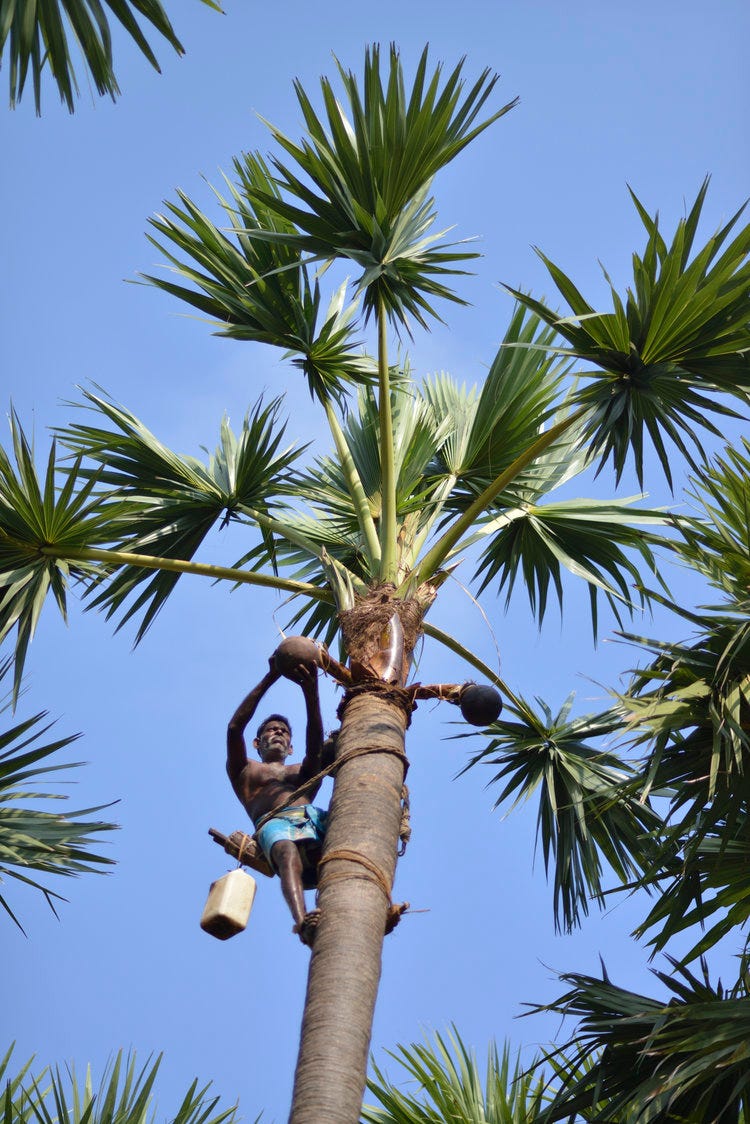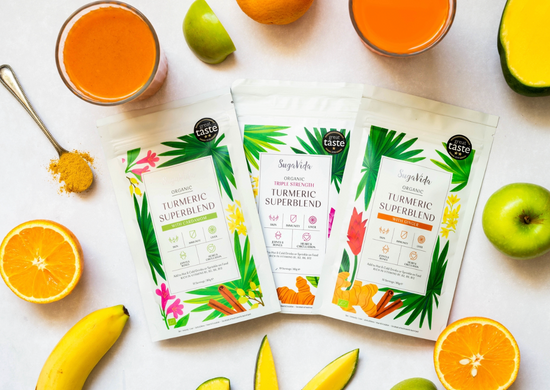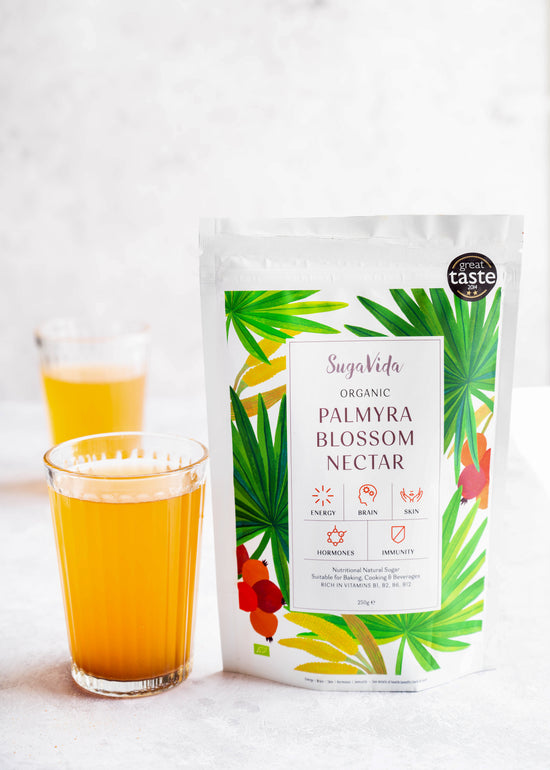Get ready for a new natural sugar - with added health benefits!
Palmyra Blossom Nectar is unlike other sugar alternatives on the market because its 100% natural and the only known plant source that contains bioavailable vitamin B12.
This natural sweetener has been cultivated and used in India for over 6000 years so its not new!
Who Knew Medicinal Sugar Actually Exists!
Known in Ayurveda as “medicinal sugar” or “sugar for diabetics”, Palmyra Blossom Nectar is a type of palm sugar, though with a far superior nutritional profile, exceptional taste, and properties that deliver countless health benefits.
Palmyra sap has higher vitamins and minerals and has only 3.1 grams of fructose sugar per 100 grams unlike coconut palm sugar that has 40 grams of fructose per 100 grams thus remarkably good for diabetics. Palmyra Palm Sugar is very rich in essential vitamins, minerals, and amino acids.
A Unique & Labour Intensive Cultivating Process
Cultivating this special nectar is a unique and laborious process which goes someway to explaining the premium price tag.
A ‘tapper’ has to climb the Palmyra tree to collect the sap twice a day. The first is in the early morning to make a cut in the pod. If an incision is not made in time again in the evening, the tree will self-heal, and it'll take 15 days before another can be made safely without putting the tree’s health in danger. Each tapper looks after 50 trees and with the average height of the Palmyra palm measuring 45 feet, our tappers are very fit!
One of the team, Mr Mabu, is 69 years old – with not an ounce of excess fat on his body and in perfect health! There are lots of tappers who even work into their nineties without any problems.
Transferring The Liquid
Once the liquid of Palmyra palm is collected in the special pots it has to be transferred very quickly to the cooking pan. Left unattended it will turn into an alcoholic ‘toddy’ within 4 hours, which is also a product enjoyed by the locals! Once in the boiling vat, the Palmyra palm juice gets heated up and becomes a gooey, soft mass that is filtered to remove any impurities. It's then cooled and granulated into a versatile, fine powder.
Providing Local Economic Security
Palmyra palm trees give the population far more than this nourishing, healthy sap. It also shelters, clothes and heats those who know how to use this remarkable tree, for its leaves are used to fashion roofs on the houses that are very light-weight, flexible and durable. The bark of the tree is used in making satchels and bags which, in itself, doesn’t sound particularly remarkable until you learn that those bags and satchels – most of them used in construction and fishery industries – come with a 50 year guarantee! In fact, the Palmyra palm tree has over 100 unique uses.
A Long Term Community Investment
It takes 15 years for the tree to grow before it can produce fruit - thus making replanting it a long-term project requiring lots of love, care and attention. By buying from SugaVida you enter in a reciprocal relationship – the tree will improve your health and wellbeing, and from the profit that we make it will allow us to plant more of them, giving unsung heroes like Mr Mabu a chance to make a good living and protect the local ecosystem.
Thank you for choosing SugaVida!









